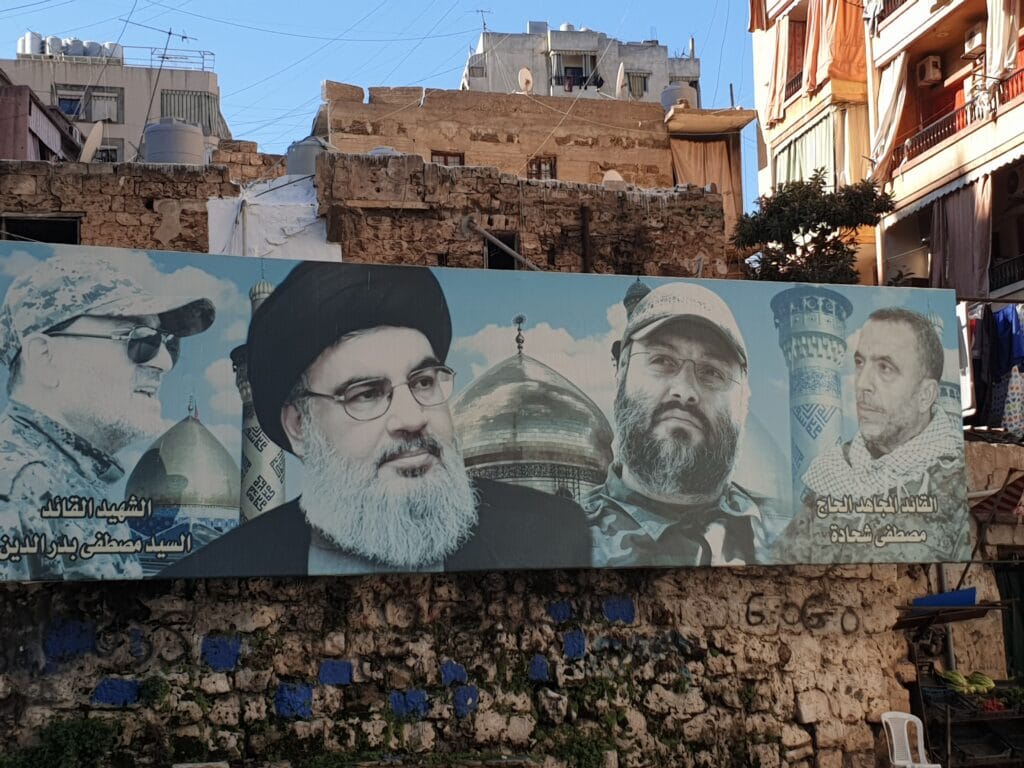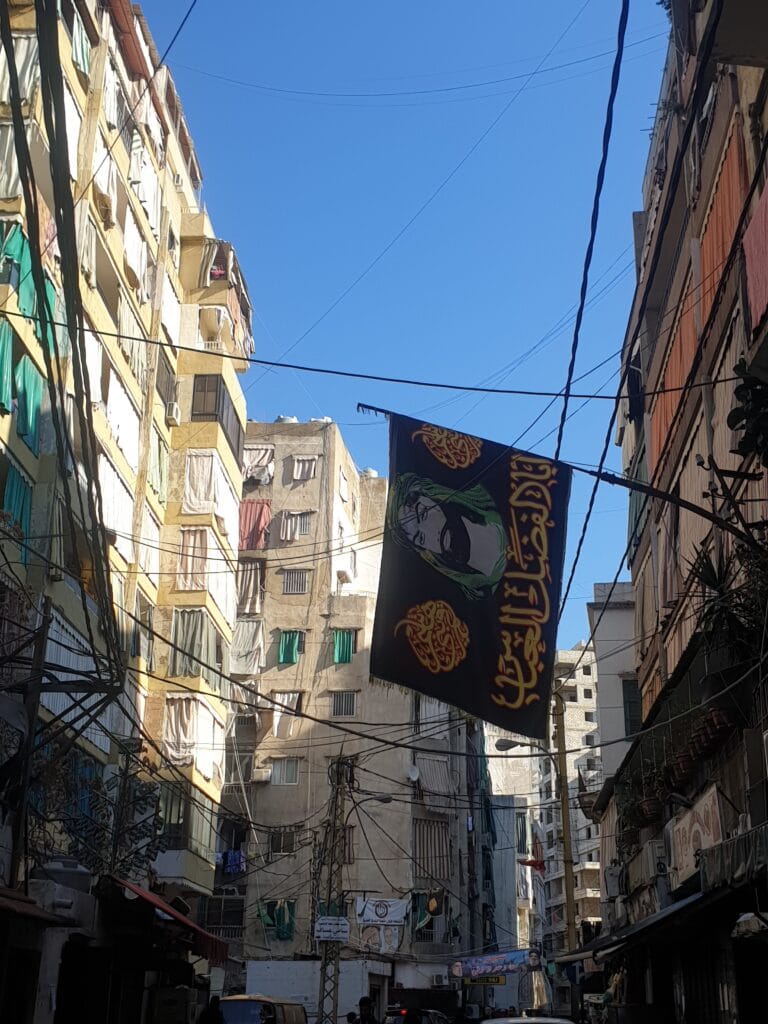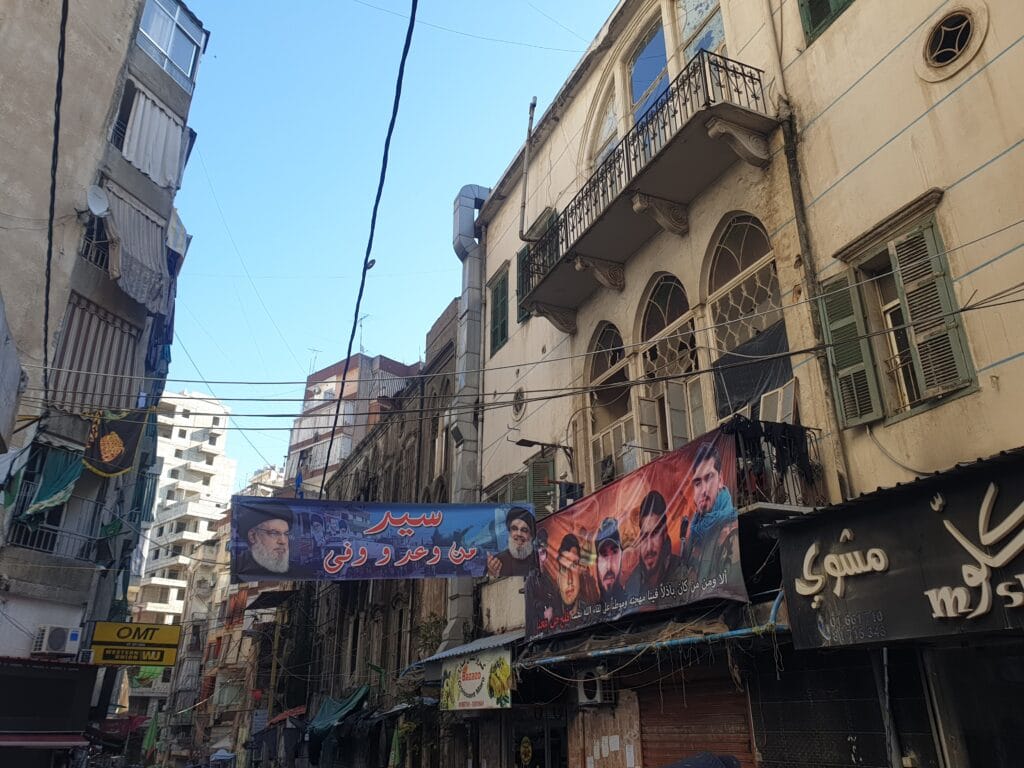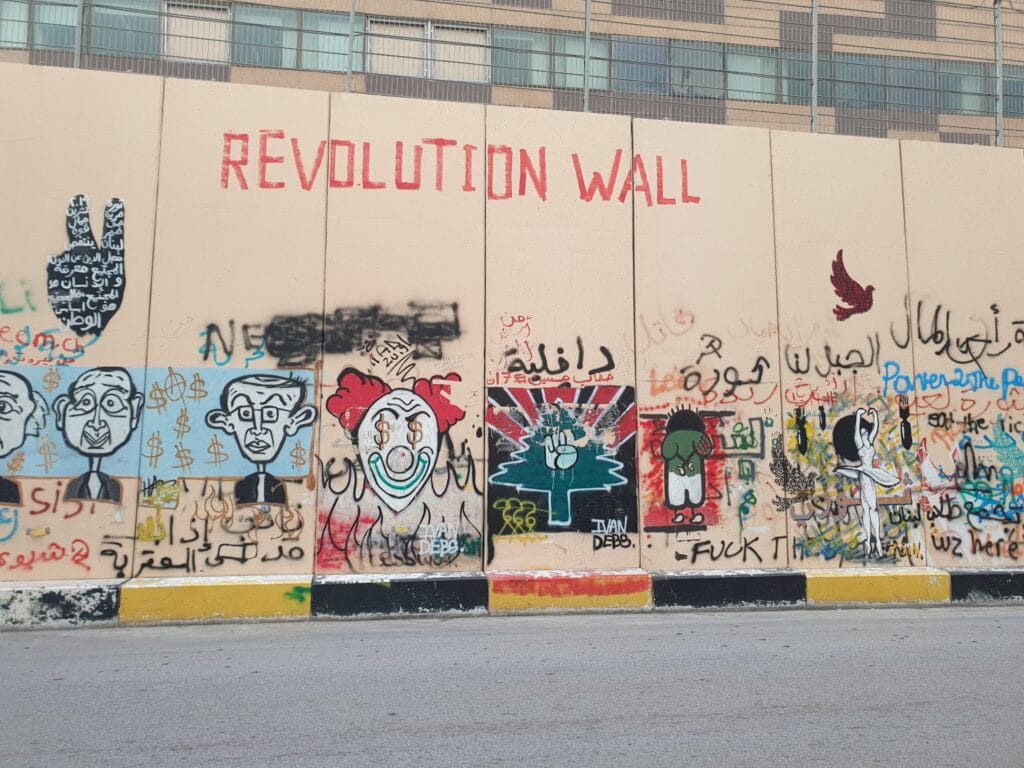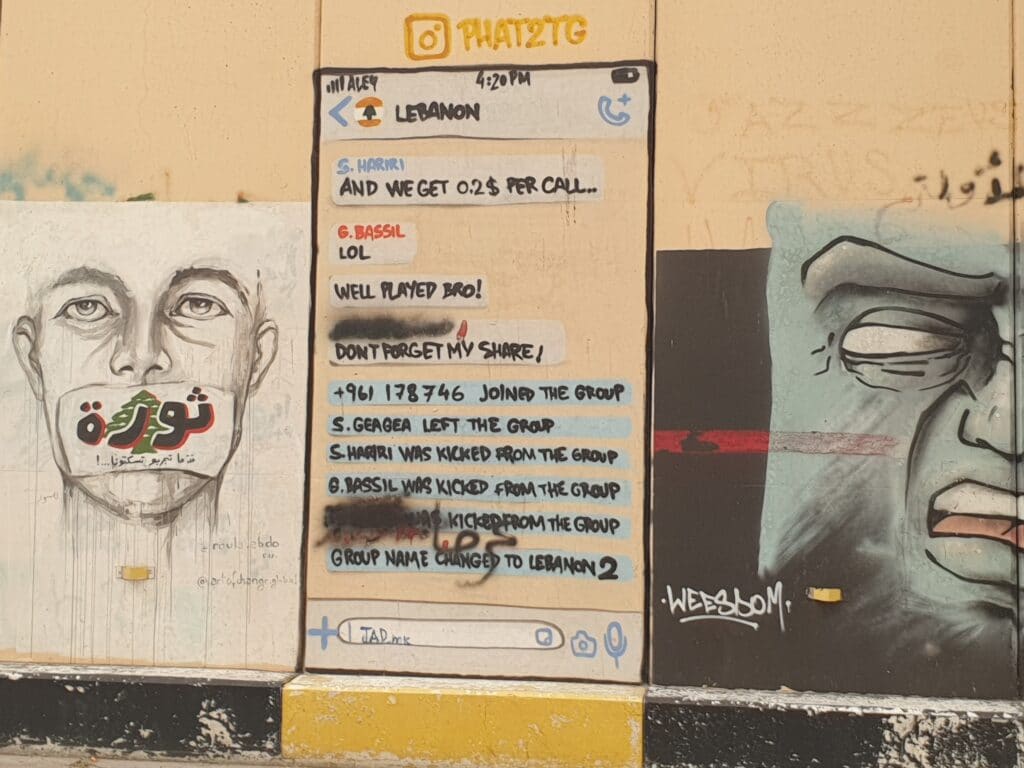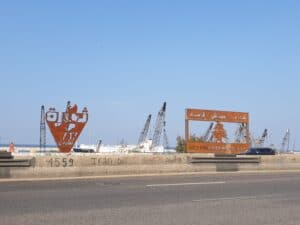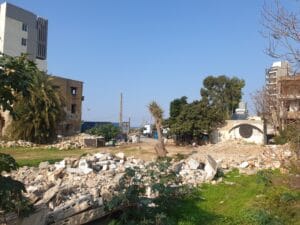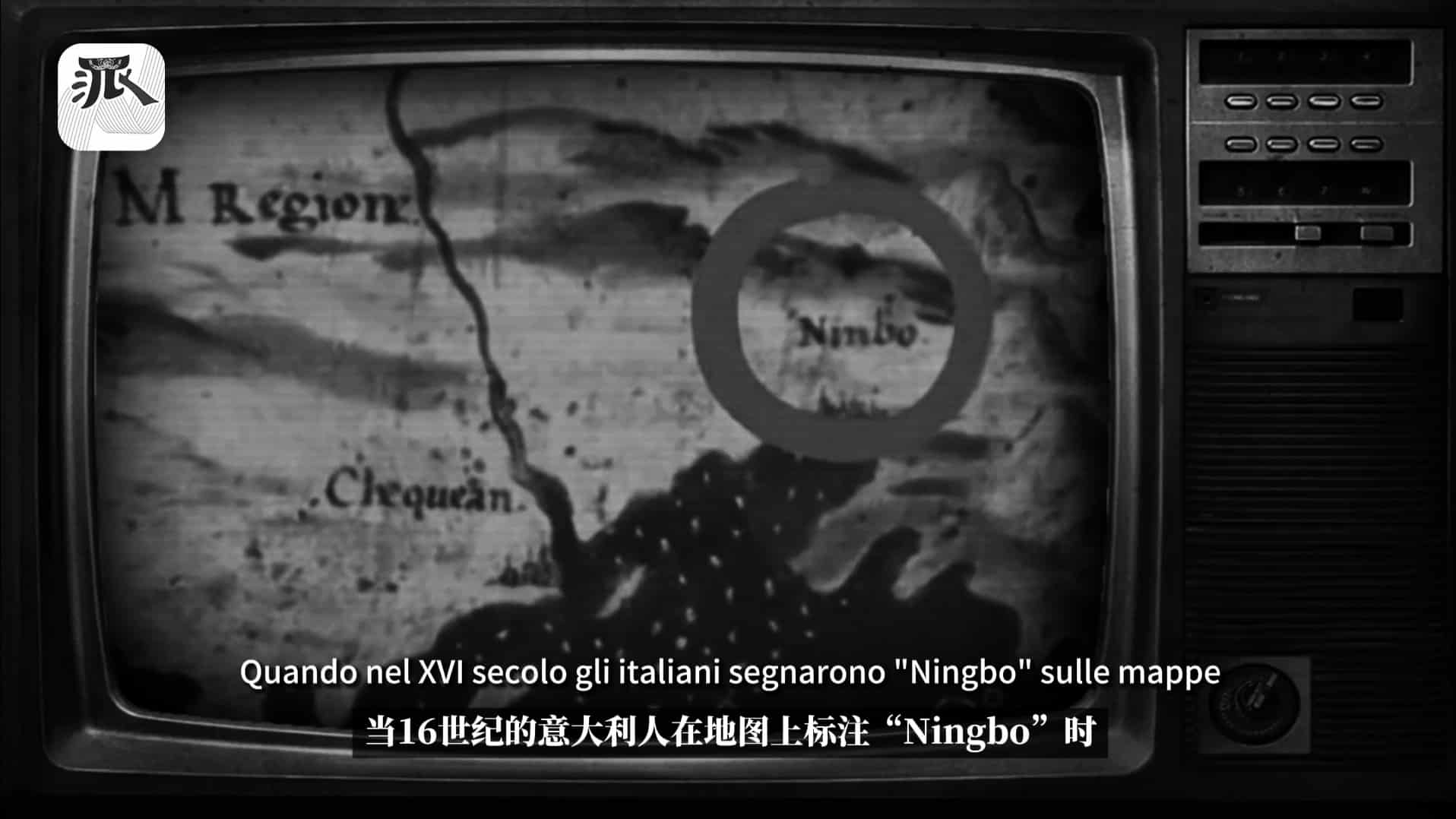Il Tazebao presents a photo reportage inside Beirut’s profound urban and social complexity and its many scars.
After the first summer reportage, Il Tazebao returned to Lebanon between December and early January. New emotions join previous memories, and new explorations widen the gaze towards new complexities, while the places seen are shown in new guises.
Hamra

December 28. Hamra is one of the Lebanese capital’s liveliest, most chaotic, multicultural areas. Hamra street is a jumble of shops, many bookstores with interesting and rare Arabic and French books. Red and black flags of the Syrian National Socialist Party testimony the high presence of Syrians. In Hamra, we met Ziad Harfoush, Director of National News Agency (NNA).
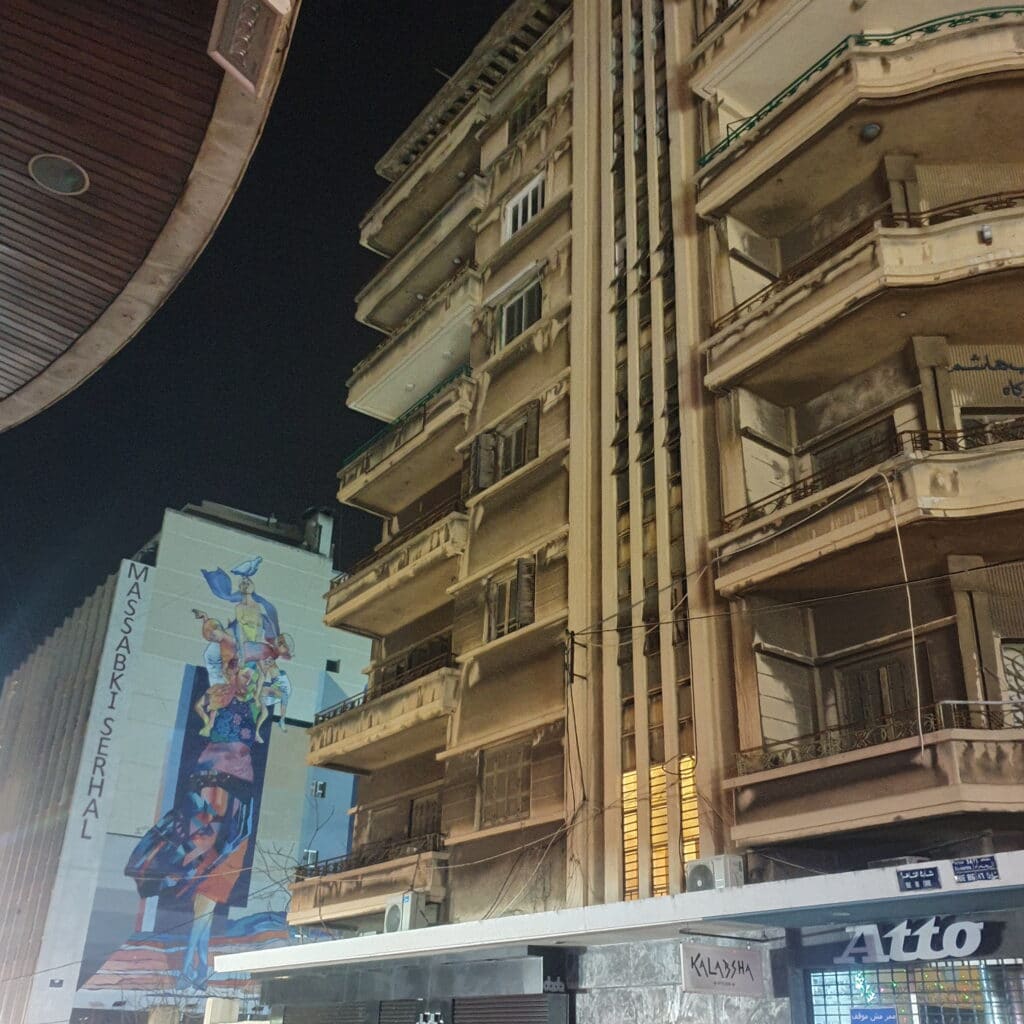
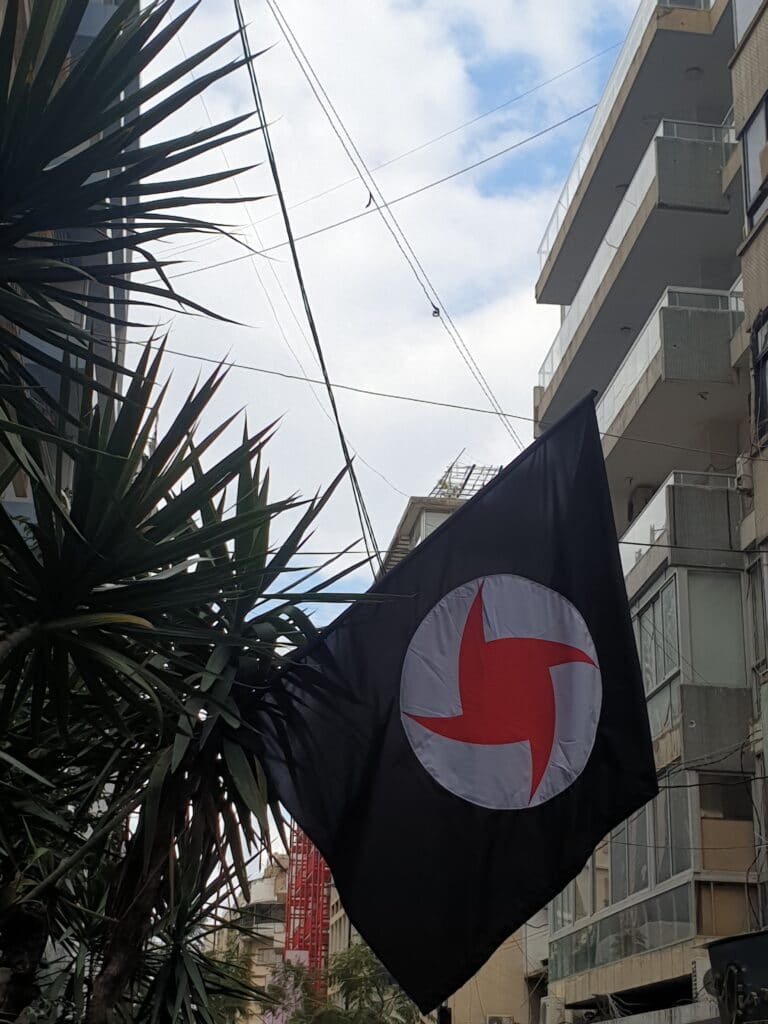
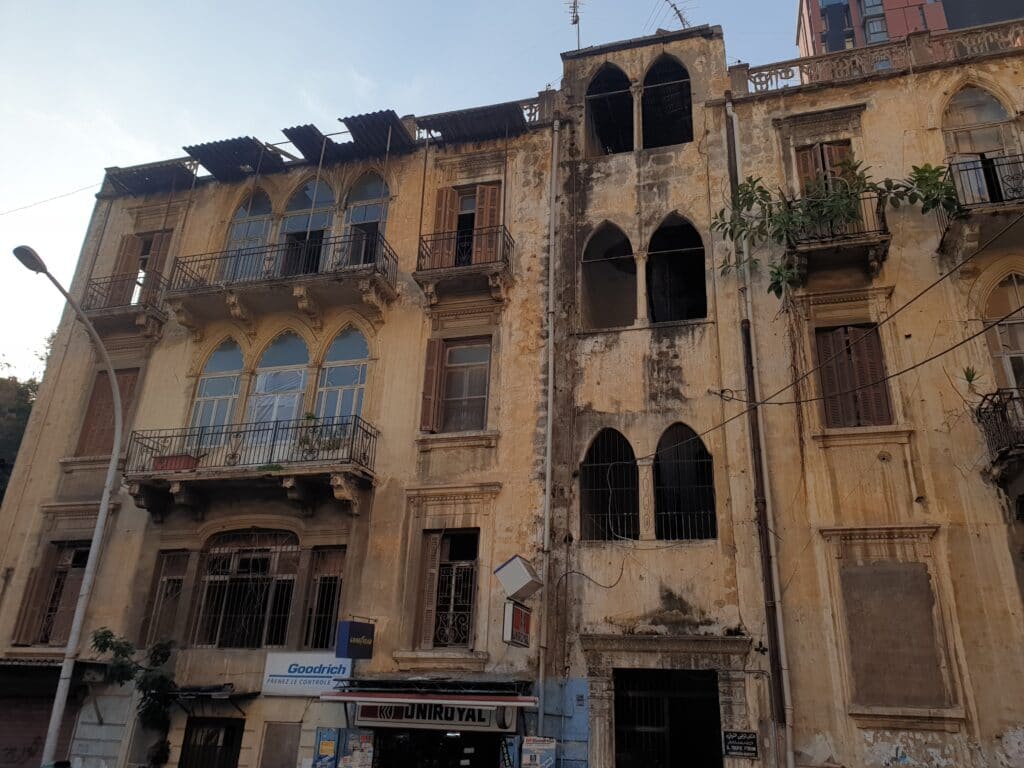
Downtown
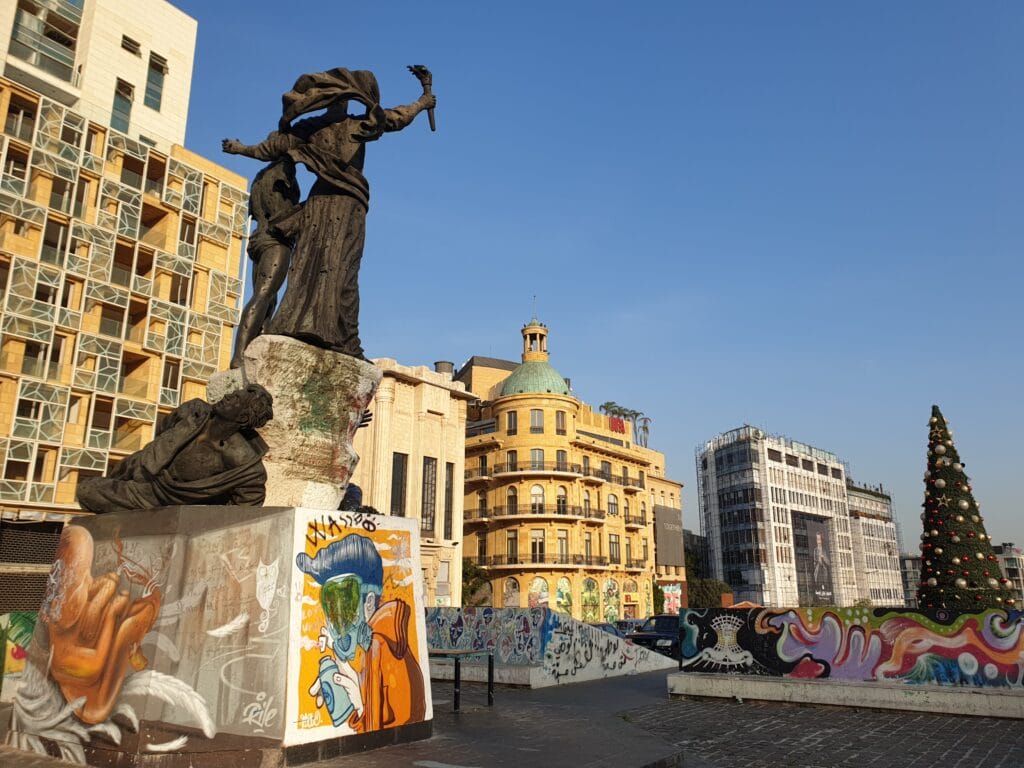
December 29. The contestant heart of Beirut. Downtown radiates from Martyr’s Square with the statue made by Marino Mazzacurati that many protests have seen and gathered. Next to it is a district with a high concentration of sacredness: the Mohammad Al Amin Mosque, the Saint George Maronite Cathedral, Saint George Greek Orthodox Cathedral, Mansour Assaf mosque, AlOmari Grand Mosque.
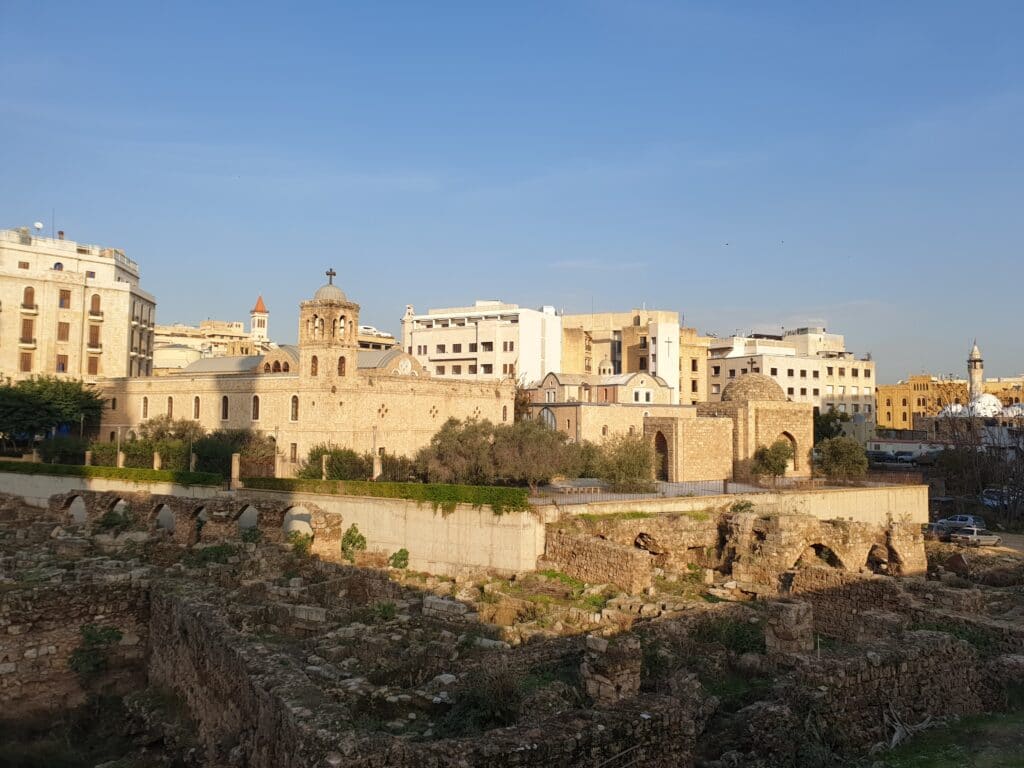
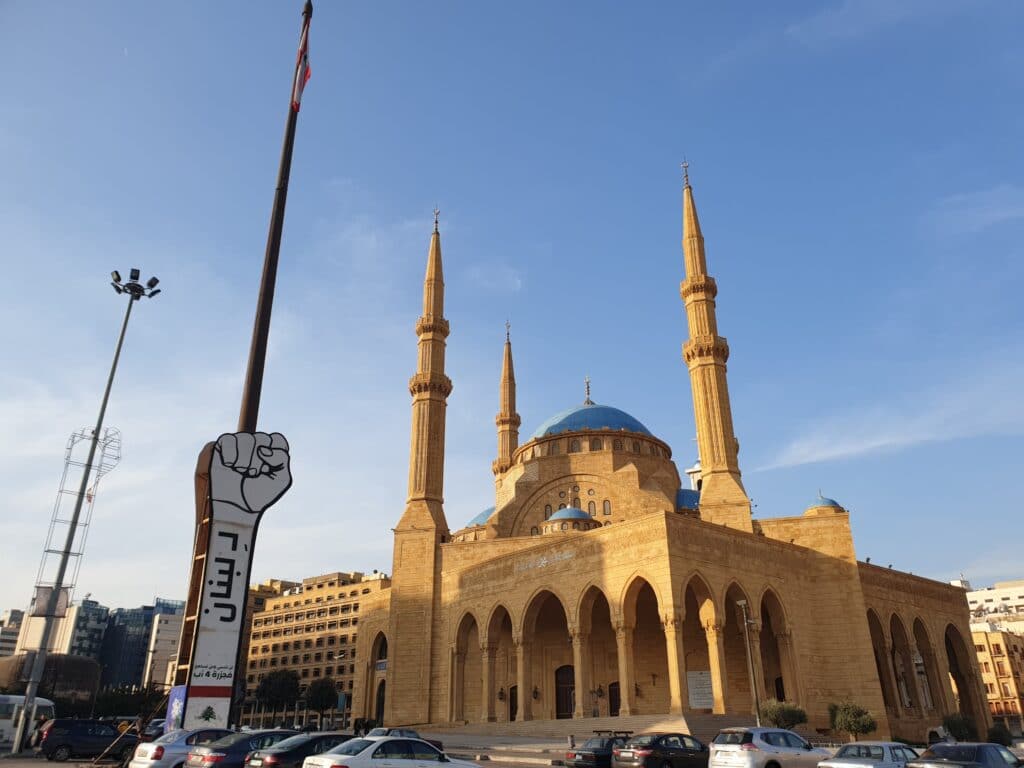
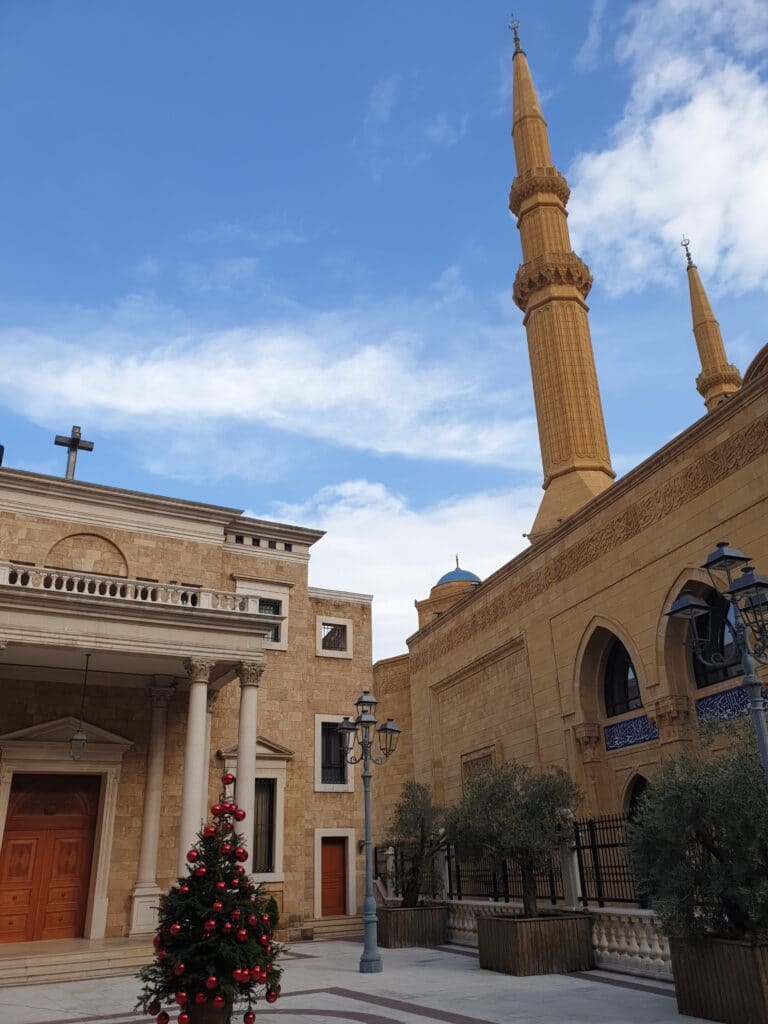
Further on, the skeletal remains of the L’Œuf cinema, a perennial memory of the war. The front line passed nearby during the civil war.
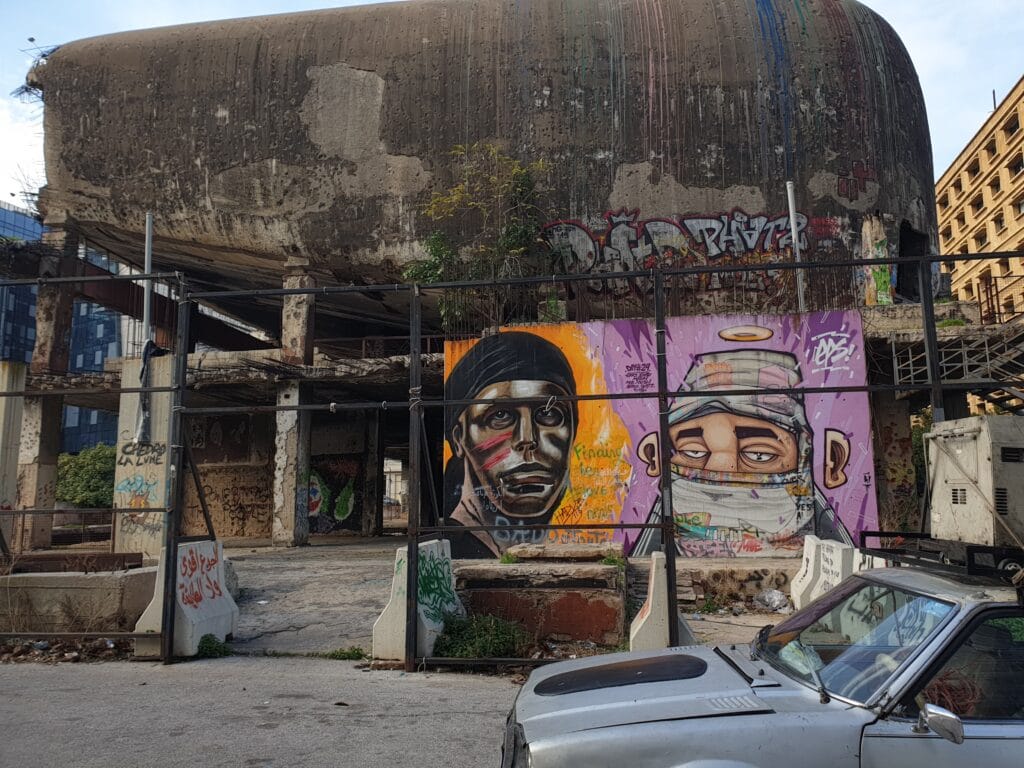
Also near Martyr’s Square is the “wall of the revolution”, animated by graffiti: art, irony, provocation, political protest, anger mix.
The promenade
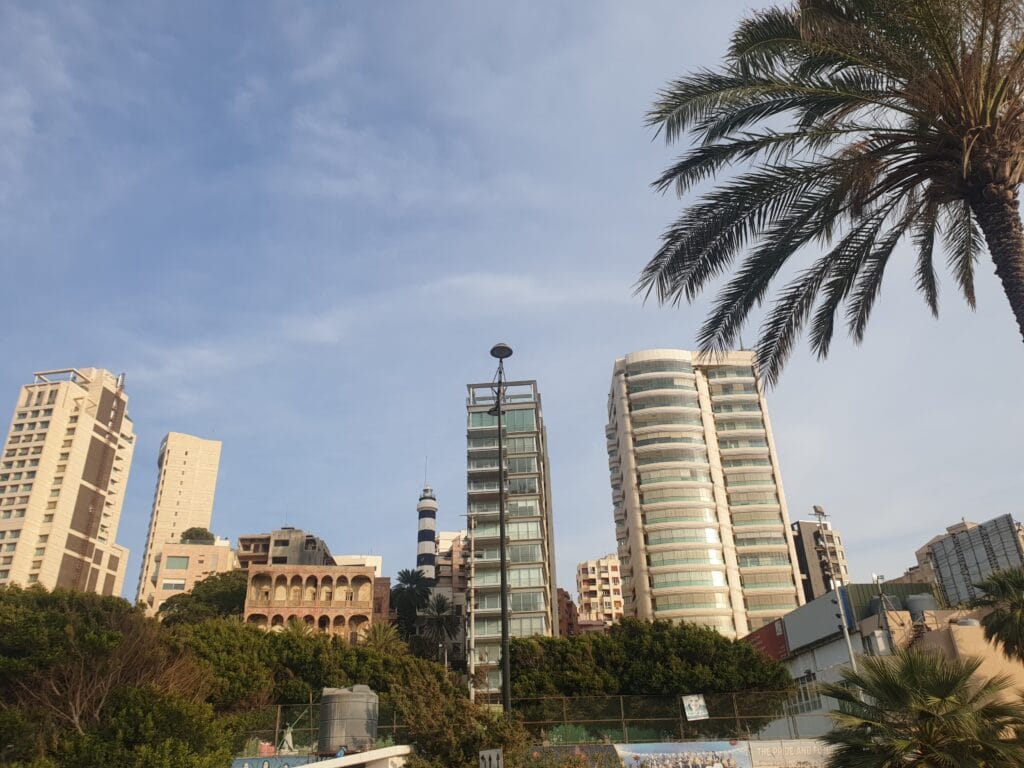
December 31. Beirut’s light is genuinely pure. It makes everything softer and gentler: everything is sweet as a dream. The promenade is populated by Phoenicians who entertain themselves in games and jokes. The waves lash traditional fishers. Will these be the “beaches of light” that Lucretius mentioned?
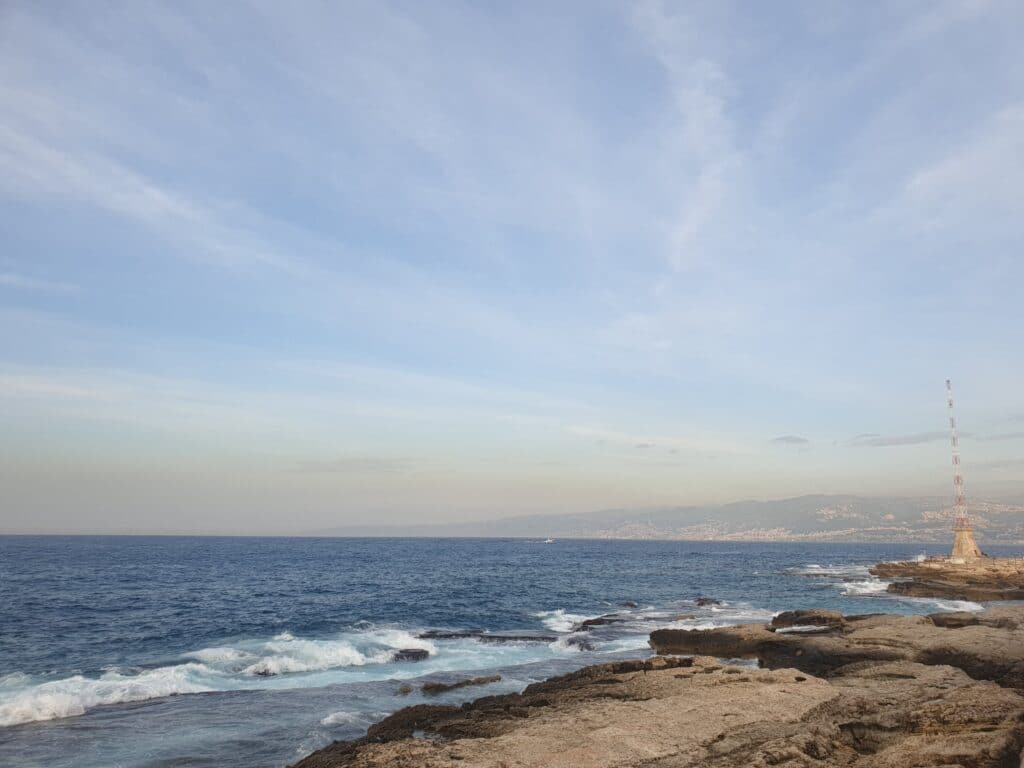
Port of Beirut
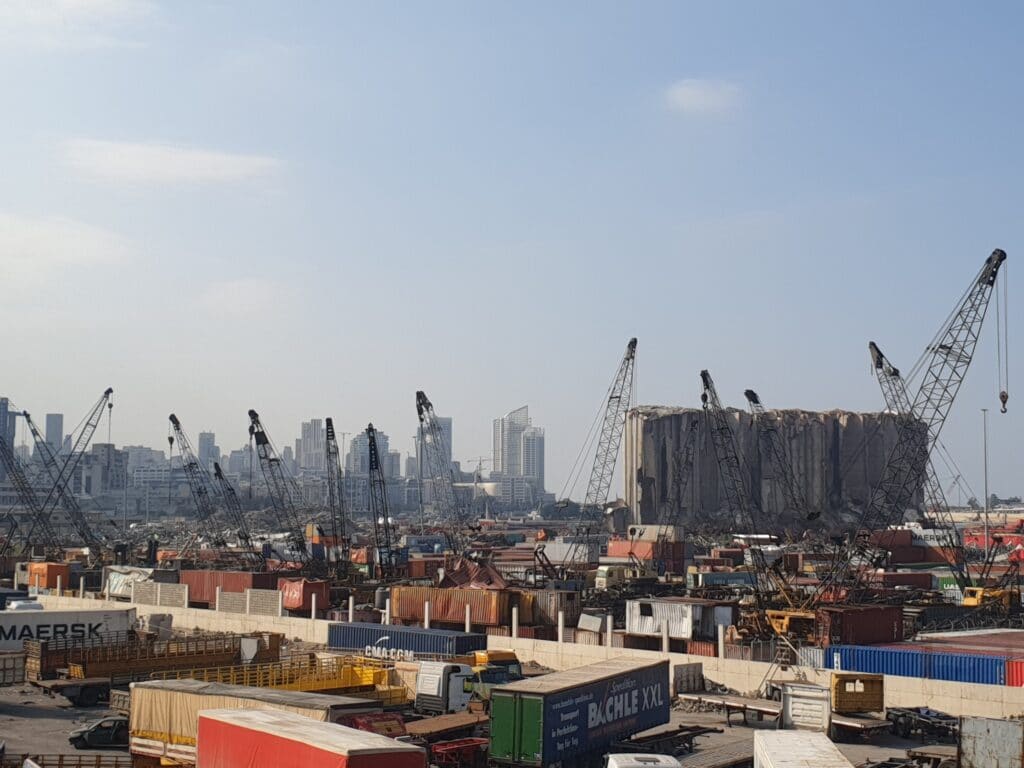
January 2. The vital heart of Beirut is still lifeless today: a tangle of immobile cranes like containers, debris standing in wait, the precarious life of destroyed or dilapidated buildings and the memories of broken lives. The statue of the emigrant meditates on the disaster with his back to the city. Some protest graffiti colours the void, and the faces of the victims bring back to reality. If it were not for the noise of the great thoroughfare named after Charles Helou, it would seem to be in a silent scenography, once suspended, a crystallized drama. Although “Always be merry” is read almost everywhere, Beirut is empty even these days, thanks to the crisis and the pandemic, and at night it is tinged with inviolable darkness, interrupted only by some rare and courageous light. Everything adds unreality to unreality.
Originally published in Italian by Assadakah: Libano – Il porto di Beirut oggi
Khandak El Ghamik
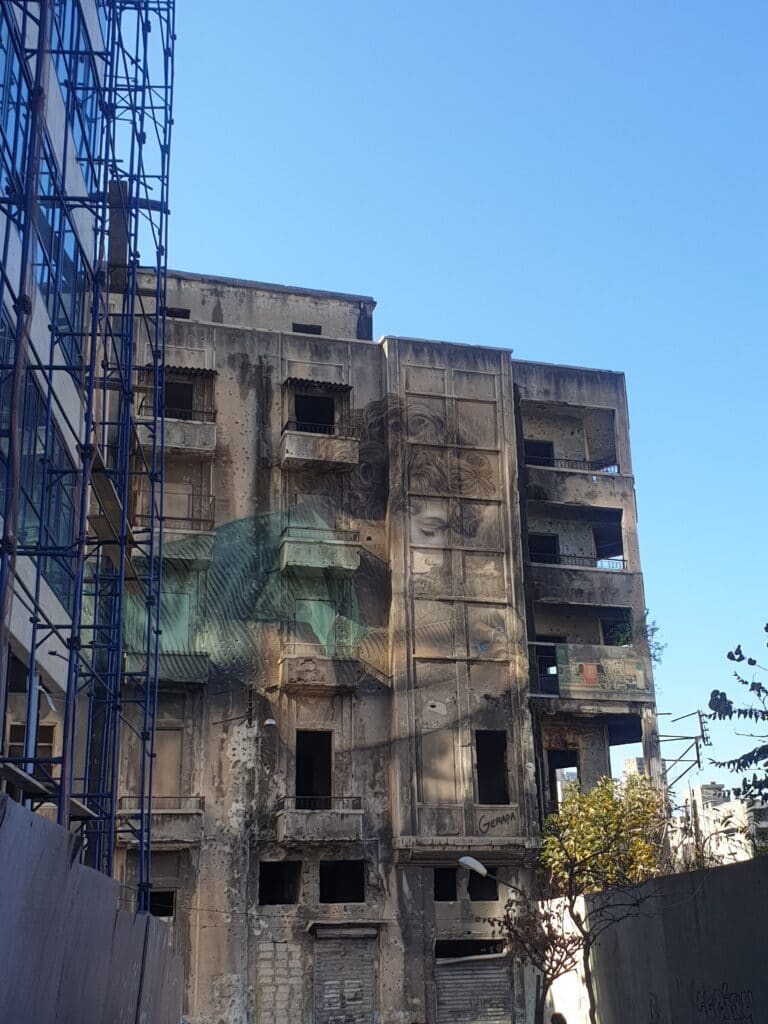
January 3. Khandak El Ghamik means “The Deep Trench”, and the name derives, according to L’Orient Today, from the fact that the main street ran along a river. The neighbourhood is one of Beirut’s poorest areas and is considered a bad neighbourhood. The area has grown since the 19th century; rare traces of Ottoman and colonial buildings remain. Until the civil war, Christians and Sunnis also lived there, escaped and were replaced by Shiites from the Beqaa Valley or other areas of Beirut. The neighbourhood is mainly Amal and Hezbollah. The portraits of Nasrallah, Berri and Soleimani dominate.
